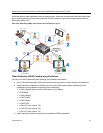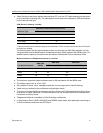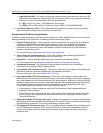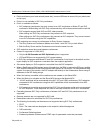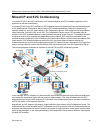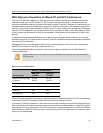
RealPresence Collaboration Server (RMX) 1500/1800/2000/4000 Administrator’s Guide
Polycom®, Inc. 24
Mixed CP and SVC Conferencing
In a mixed CP (AVC) and SVC conference, AVC-based endpoints and SVC-enabled endpoints can be
supported in the same conference.
In a mixed CP (AVC) and SVC conference, SVC endpoints transmit multiple resolutions and temporal layers
to the RealPresence Collaboration Server like the SVC-based conferences, while AVC endpoints, for
example, send only one AVC video stream to the Collaboration Server. AVC endpoints can send different
video protocoles, such as H.263, and H.264. The Collaboration Server relays SVC-encoded video bit
streams to the SVC-enabled endpoints in the conference according to their request. This enables the video
conference layouts to be automatically assembled by the endpoint. AVC endpoints connected to the
conference send a single AVC video bit stream to the Collaboration Server, which is then transcoded to SVC
video streams. SVC-enabled endpoints receive the AVC converted video bit streams through the
Collaboration Server from the AVC endpoints as a single SVC video bit stream. Alternatively, AVC endpoints
receive a single video bit stream with the defined video conference layout from the Collaboration Server.
The following diagram illustrates an example of a mixed CP and SVC conferencing mode:
In this example, an SVC endpoint (1) receives three video streams at different frame rates and resolutions,
and creates the conference layout with the received video streams. The video bit stream that the SVC
endpoint receives from the AVC endpoint (3) is decoded in the Collaboration Server and then encoded into
an SVC bit stream in the required resolution.
Alternatively, an AVC endpoint (4) sends a single resolution video stream to the Collaboration Server. The
Collaboration Server first decodes the SVC bit streams and AVC bit streams, then the Collaboration Server
composes the video layout for the AVC endpoint and sends a single resolution video stream with the video
layout to the participant. In the displayed example, the Collaboration Server creates different video layouts
for each AVC endpoint.



